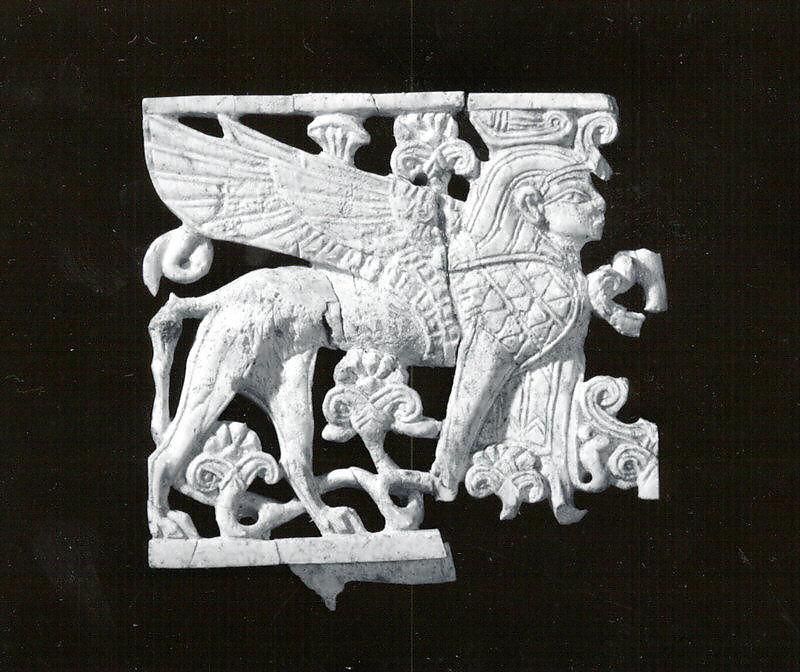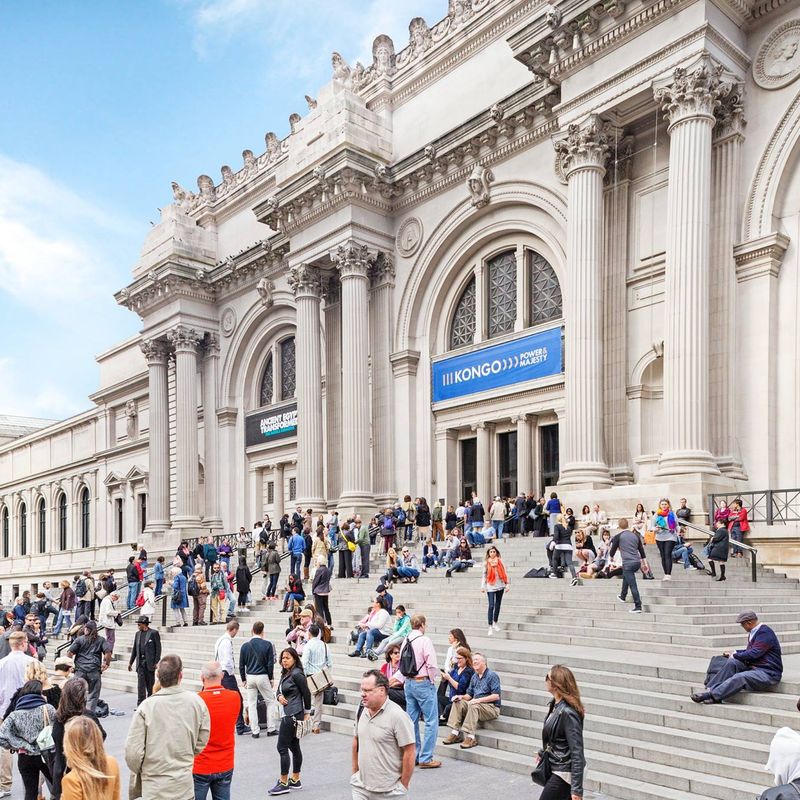
Openwork plaque with a sphinx striding through a floral landscape
Unknown Artist
A sphinx, a fantastic creature drawn from Egyptian art that combines the head of a human with the body of a winged lion, strides through a landscape of voluted palmette flowers, buds, and tendrils in this rectangular openwork plaque. This piece was found in a storeroom at Fort Shalmaneser, a royal building at Nimrud that was probably used to store tribute and booty collected by the Assyrians while on military campaign. The slender proportions of this composite creature’s leonine body and curling tail are frequently found on Phoenician ivories, as are several elements drawn from Egyptian art including the pschent crown (the double crown of Upper and Lower Egypt), the chevron-patterned apron hanging from its chest, the nemes cloth (a royal, pleated headdress), and the uraeus (a mythical, fire-spitting serpent) that projects from its apron. However, the facial features, including the large eye, small mouth, and full cheek, are characteristic of North Syrian art. Because of this mixture of Phoenician and North Syrian elements, this plaque has been characterized as South Syrian, a style that occupies an intermediate position between the two.
The sphinx is framed on the right by a fragmentary, stylized palmette tree and by thin strips of ivory on the upper and lower edges. A fragmentary tenon that projects from lower edge suggests that it may have been fitted into a frame, likely as part of a piece of furniture. There are four holes drilled through the plaque: they can be seen at the curve of the uraeus, through the curling stalks growing behind the right foreleg and left hind leg, and under the volute above the wings. These holes may have originally aided in securing this piece to a frame by means of dowels. The original composition may have been symmetrical, with an identical sphinx facing this one on the other side of the stylized tree.
Built by the Assyrian king Ashurnasirpal II, the palaces and storerooms of Nimrud housed thousands of pieces of carved ivory. Most of the ivories served as furniture inlays or small precious objects such as boxes. While some of them were carved in the same style as the large Assyrian reliefs lining the walls of the Northwest Palace, the majority of the ivories display images and styles related to the arts of North Syria and the Phoenician city-states. Phoenician style ivories are distinguished by their use of imagery related to Egyptian art, such as sphinxes and figures wearing pharaonic crowns, and the use of elaborate carving techniques such as openwork and colored glass inlay. North Syrian style ivories tend to depict stockier figures in more dynamic compositions, carved as solid plaques with fewer added decorative elements. However, some pieces do not fit easily into any of these three styles. Most of the ivories were probably collected by the Assyrian kings as tribute from vassal states, and as booty from conquered enemies, while some may have been manufactured in workshops at Nimrud. The ivory tusks that provided the raw material for these objects were almost certainly from African elephants, imported from lands south of Egypt, although elephants did inhabit several river valleys in Syria until they were hunted to extinction by the end of the eighth century B.C.
Credit: Rogers Fund, 1964
c. 9th-8th century B.C.
Ivory
7.6 x 7.5 x 0.9 cm
64.37.8
Image and text © Metropolitan Museum of Art, 2019
Where you'll find this

The Metropolitan Museum of Art
Permanent collection
